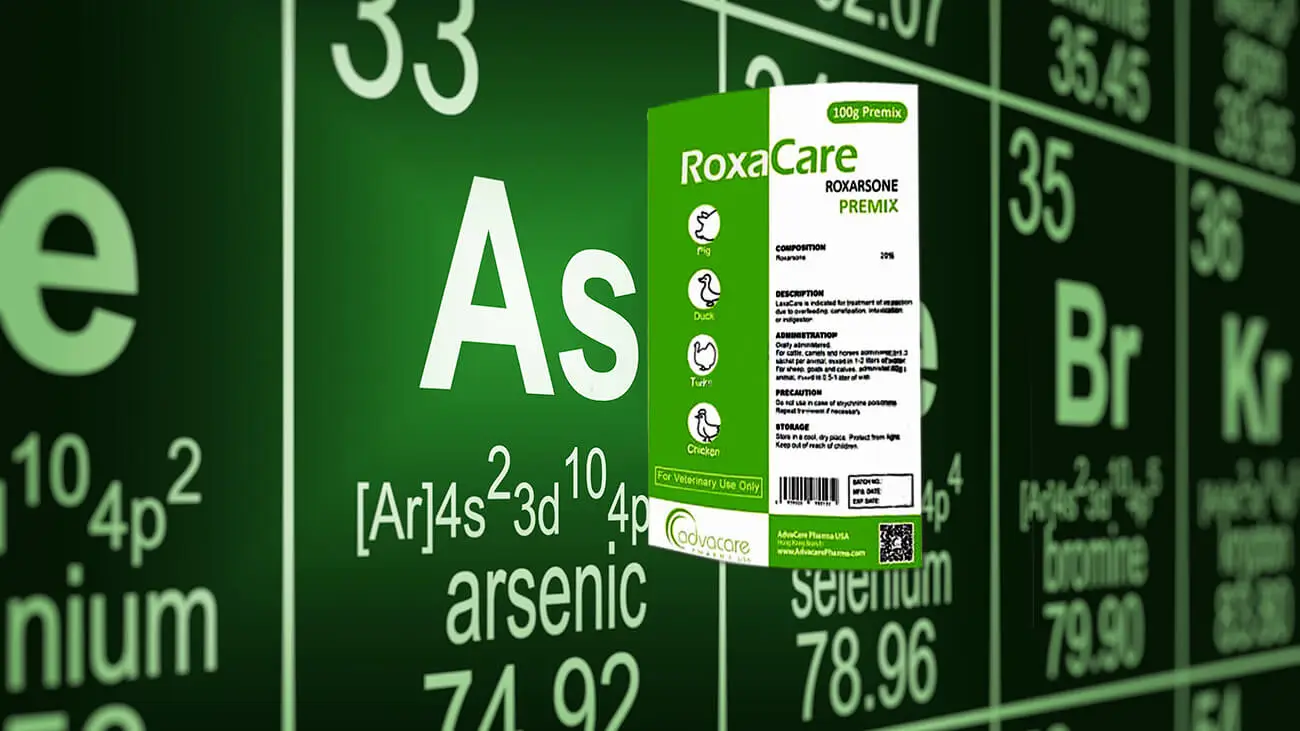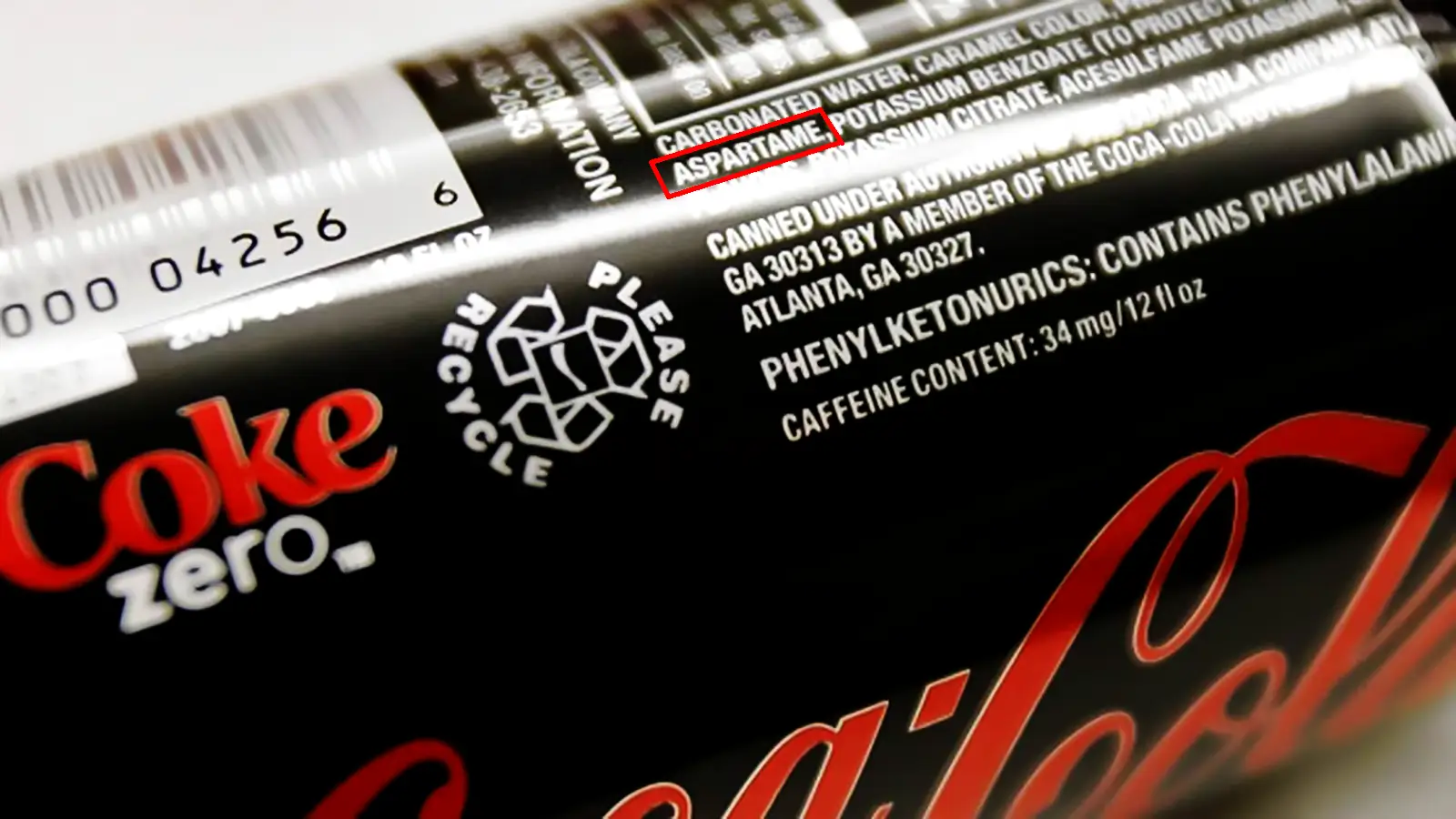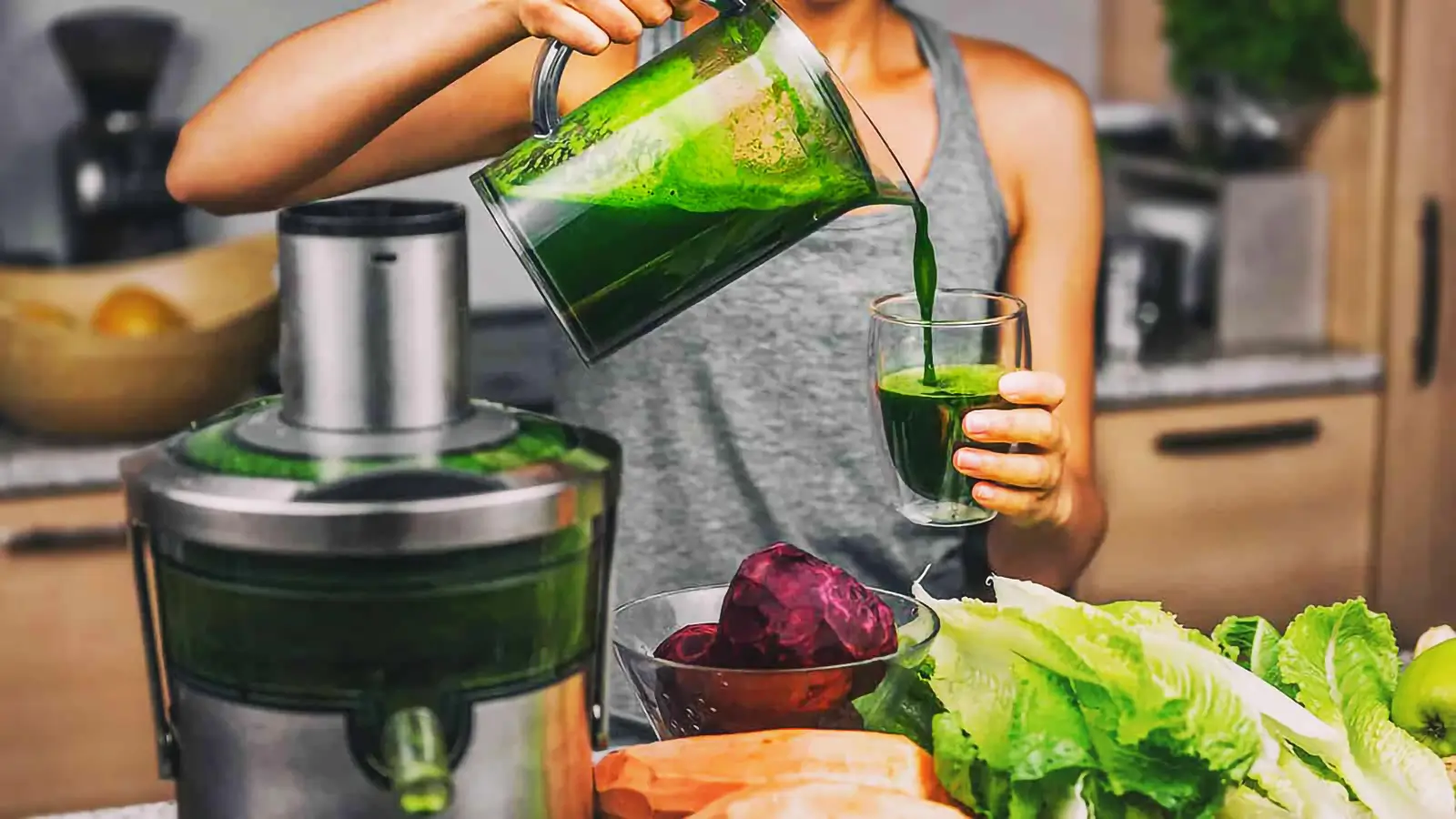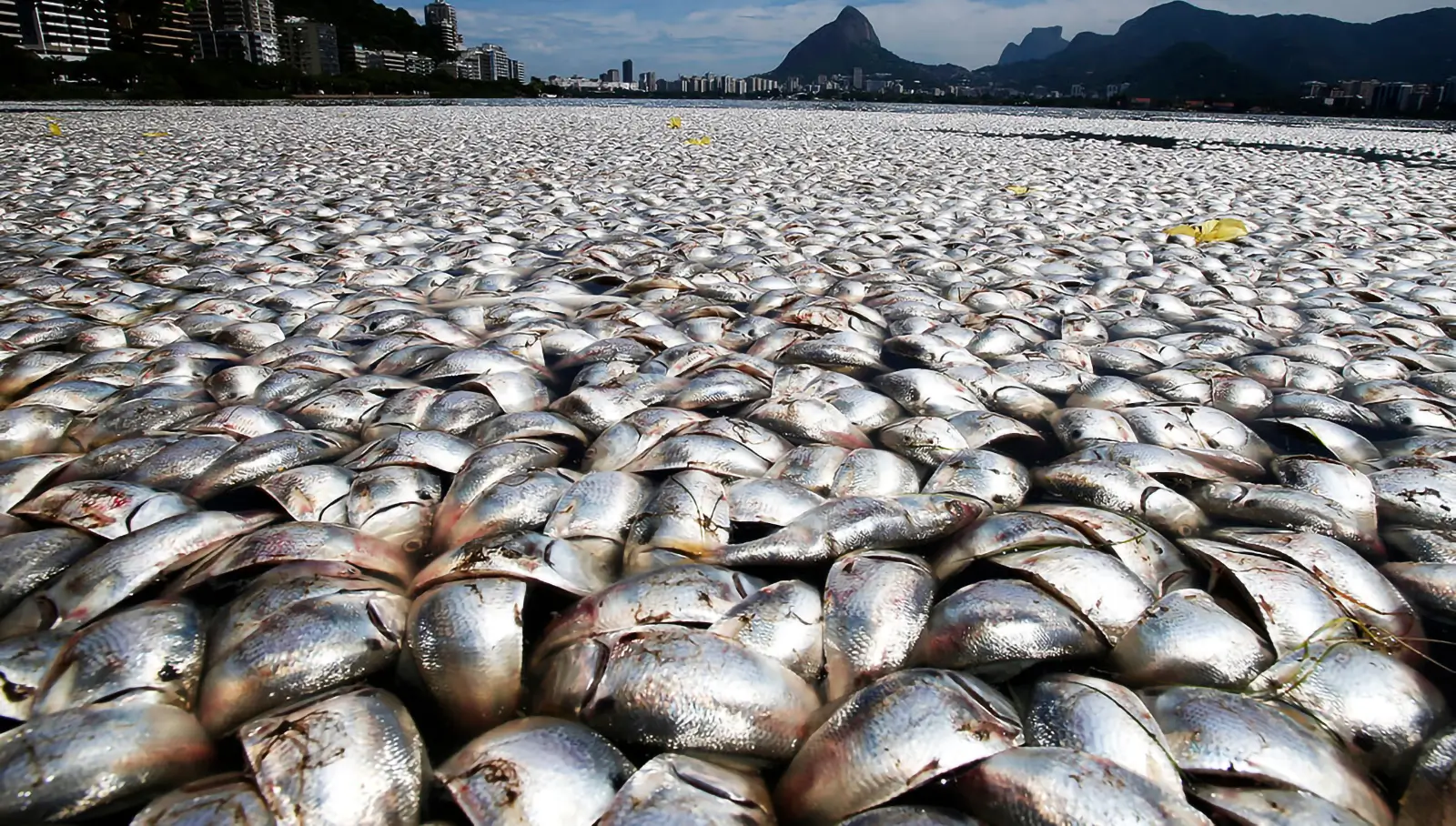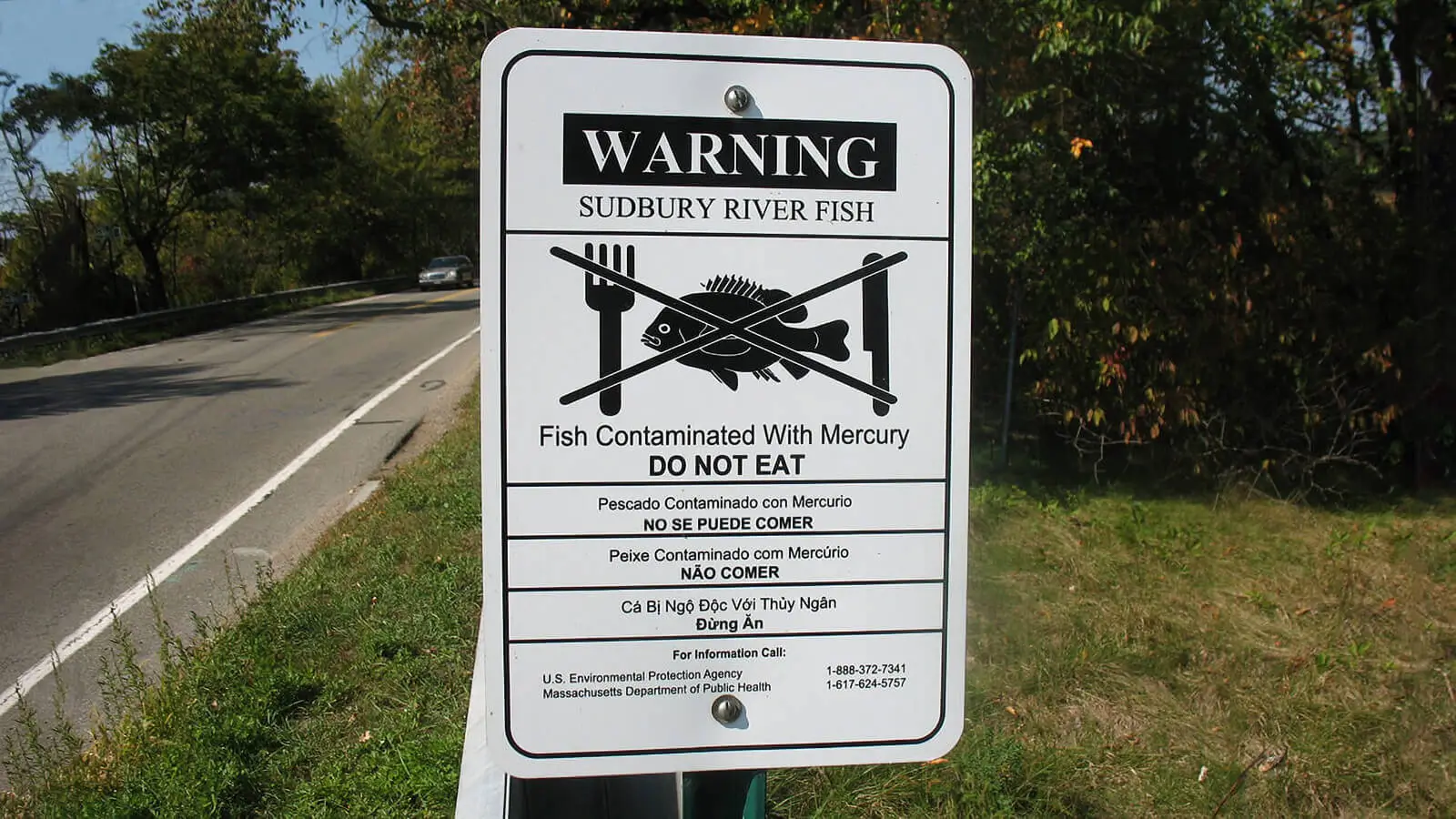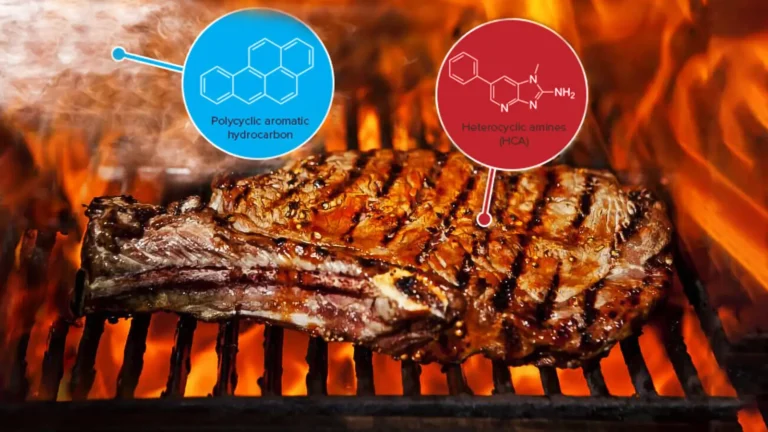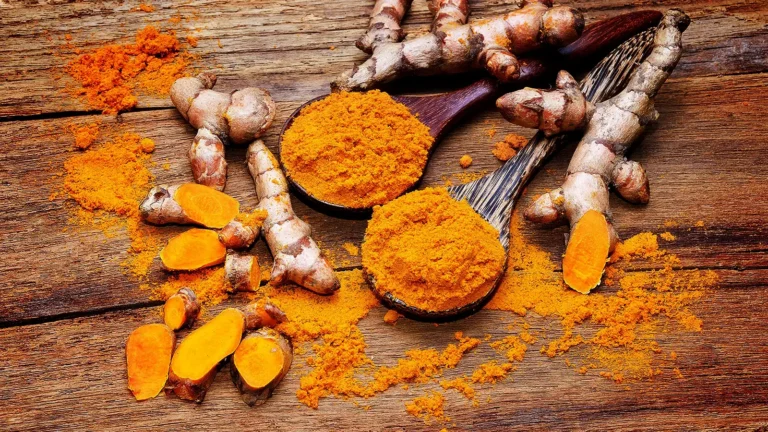Excitotoxicity of MSG (Monosodium glutamate)-Scientific Review
The most significant finding in the whole history of the food industry is one particular branch of neurotoxins that are called excitotoxins.
Milos Pokimica
Written By: Milos Pokimica
Medically Reviewed by: Dr. Xiùying Wáng, M.D.
Updated June 9, 2023Most people do not understand that food companies have private laboratories. That they do their own research. These types of private research are never published because it is not their goal to push science but only their share of the market. The research they do publish is for manipulation and marketing purposes.
The food companies want to know how is our brains attracted to food and how we respond to different stimuli so that they can make their food attractive and addictive when you eat chips for example.
There is actual science behind it. The result is a scientifically engineered combination of salt, sugar, fat, and chemicals designed in such a way that we cannot just eat one. Even if we are full, there is still room for one more crunch. Crunch itself is designed to be addictive. The way it breaks between the teeth, the pressure of the bite force, the sound of the crunch. They want people to always at the end of each product feel desire to reach for the next one. When you go inside a food company, you will find top-notch scientists, math, and laboratories. When we look into patents that are approved for the food industry, we will see how big of an apparatus is behind food engineering: chemistry, physics, and biology. The food industry can simulate the taste of anything we want, without being actually real.
The most significant finding in the whole history of the food industry is one particular branch of neurotoxins that are called excitotoxins.
These chemicals are so crucial for the industry that today you would not be able to find a product that does not have them in one form or the other. Excitotoxins are not derived from food and are not natural, but they can do a lot of good things for the industry. These chemicals for them are a dream come true. Literally, you can take a bowl of boiling water and sprinkle some of the stuff on top, and you will be having the best meal ever. That is what they call soup. You can put them into disgusting products that not even animals would eat, and you will have the best meal ever. Alternatively, you can just take the rancid, rotting waste and put them there and you will not feel any rancidity or bad taste whatsoever. That is the exact purpose for what they are used.
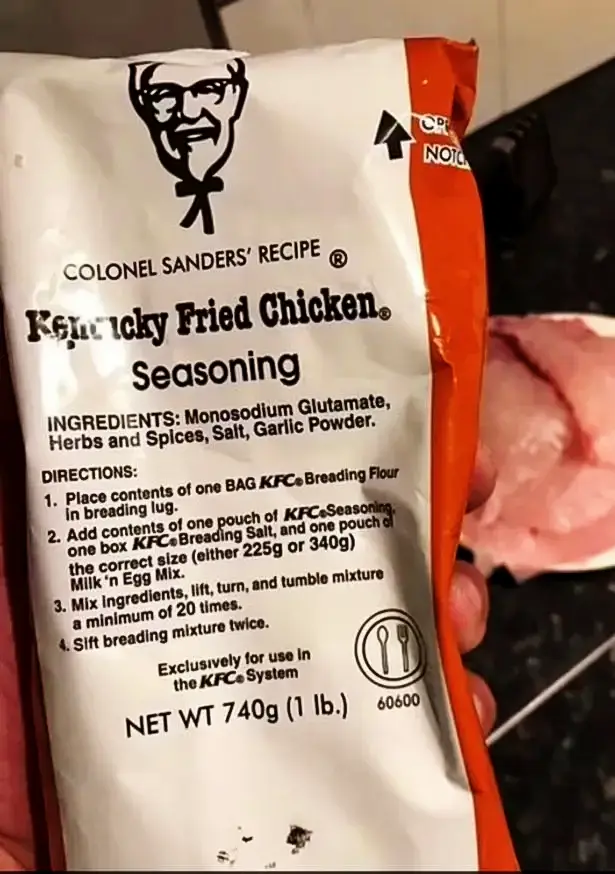
Before WW2 can foods, for example, were not that tasty because they will lose some of their original taste and also had a mild metallic taste. After soldiers in WW2 discovered that Japanese rations taste better and don’t have metallic flavor industry became very interested.
All of this is bad as it is, allowing someone to fool you and sell you waste as food but there is more to it.
Excitotoxins are what the name sad that they are. They excite the nerves.
When you put them into your mouth, your brain goes into a high level of neural activity and thinks that that meal is something out of this world. There are receptors for this stuff on the tongue, and then there is overexcitability of the neurons in the brain that follows. Brain cells became very excited, and they start to fire their impulses very rapidly to no end.
The first thing that this does is that it desensitizes the brain to regular testing food so after eating a lot of these chemicals even sugary or salty processed food seems plain with no flavor.
Another thing is that it kills. It kills neurons.
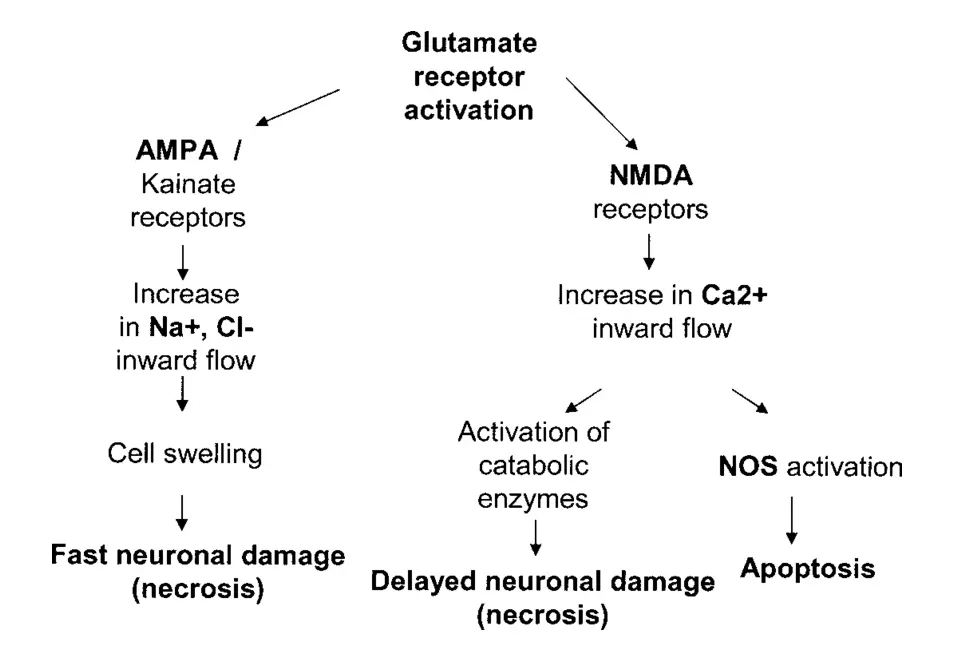
Brain cells became exhausted from all that firing, and after a while, they die. In a petri dish, it takes about one hour for them to die and until that time they look normal. They look perfectly healthy and after some time neurons just suddenly die.
These chemicals are highly toxic brain poisons. And you cannot get enough of them.
The first excitotoxin discovered and used was amino acid glutamate. Glutamate is a significant component of a broad variety of proteins. Consequently, it is one of the most abundant amino acids in the human body. Any protein in any food that we eat has it. Glutamate is created in the central nervous system from glutamine. Under normal circumstances, an adequate level is obtained from the diet and there is no need for any to be synthesized by the body itself. Also in normal conditions, there is no glutamate in the bloodstream in the brain in high amounts because the body itself is deciding whether to synthesize it from glutamine or not. When you take already synthesized glutamate then it is already too late. Nonetheless, glutamate is formally listed as a non-essential amino acid, because the body can synthesize it. For us, it is normal to eat it.
The problem arises when you extract it. Only protein-bound glutamate and glutamine exist in food. If extracted it gets digested rapidly and then overwhelms the brain that had never been exposed to such a high level of it during evolution. And this is a big problem.
Glutamate is a neurotransmitter: a chemical that nerve cells use to send signals to other cells. It attaches to the receptor in the neuron, and that triggers the neuron to send the nerve impulse. It is a chemical that brain cells use to communicate with one another. In the membrane of the brain cells, there is a pore, a small opening. That pore is closed and opens only in one minuscule period until it closes again. Glutamate controls the opening and closing of that pore. Normally there is very little glutamate outside the cell. Minute amounts in millions of moles. Our brain goes through a lot of trouble to make sure that the level of this neurotransmitter doesn’t rise more than that minuscule amount. Only when the glutamate is needed does it get loose from its transport protein and gets attached to its receptor, opening up the pore and calcium pours into the brain cell. It is only open in a millionth of the second, just one time until the pore closes again. Once calcium is in, it starts to trigger different processes that in the end make the nerve fire the impulse.
If there is more than the normal amount of glutamate and the pore gets open for too long too much calcium will get in. If that happens, the higher level of calcium will trigger uncontrollable firing of the nerve cell.
The problem is that it is not a clean process. A nerve cell is unable to fire indefinitely with no rest. What happens is that this uncontrollable firing creates an inflammatory reaction. It will produce free radicals. Then the free radicals will start to oxidase different components of the brain cell by taking electrons from them, and this will create damage. One part of the cell that gets really damaged by this process is the mitochondria. Mitochondria are part of the cell that produces all of the energy of the cell. If mitochondria cannot produce adequate amounts of energy, the cell dies. It activates the gene called p53 which is a suicide gene. If a cell gets too damaged, it will kill itself. That is called apoptosis.
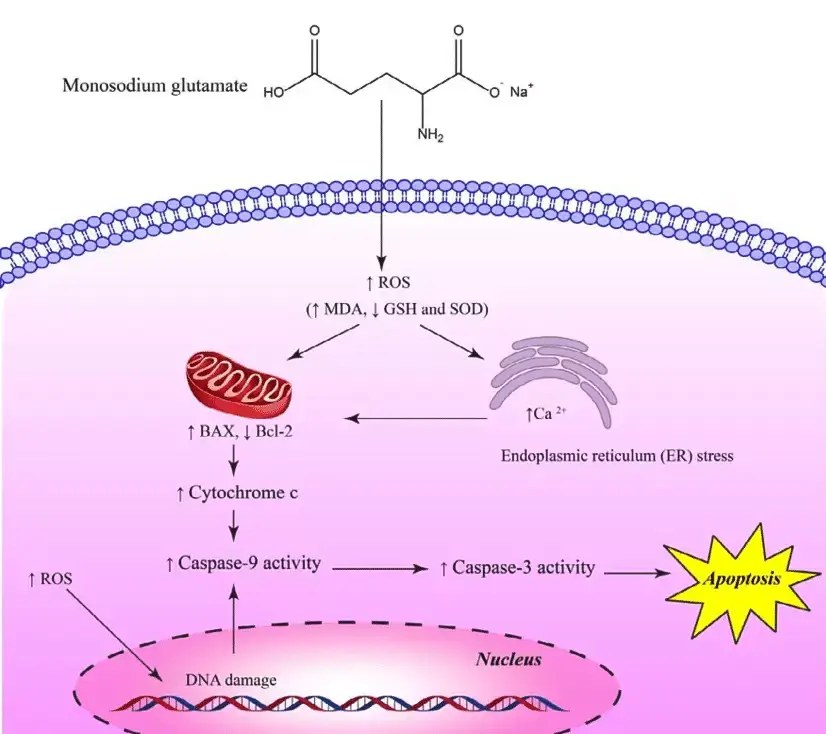
Knowing all of this is it reasonable to add this stuff to your food or the food of your children or even worse eat it during pregnancy?
What is even worse humans are five times more sensitive to the effects of excitotoxin than the mouse. We are 20 times more sensitive than rhesus monkeys. Newborn babies are four times more sensitive than adults.
If you are pregnant and you eat a lot of food that contains glutamate or another excitotoxin that will be passed through the placenta into the fetus. That will permanently damage the baby’s brain during the time when the brain is being formed.
Why are babies so sensitive to glutamate?
It is because the enzyme that normally protects the brain is immature and the blood-brain barrier is not fully formed yet. This excitotoxin can alter the way the brain forms. Lower doses can alter the way the cell operates without killing it. It will make the cell overreact so it can, for example, stimulate the secretion of too many hormones, or it might create memory problems or cloud consciousness depending on the area of the brain that is affected.
Glutamate also impairs the ability of the brain cells to absorb glucose and can make the brain hypoglycemic. You can have normal blood sugar in the rest of the body, but the brain will be in a state of hypoglycemia.
All animal babies that were exposed to glutamate have similar characteristics later in life. Keep in mind that humans are five times more sensitive than the next in line the mouse.
Organ weights were small. It causes atrophy.
Animals were all morbidly obese, and it was almost impossible to diet off this type of obesity. As soon as animals saw food, there were starting to eat uncontrollably. It alters the part of the brain (hypothalamus) that controls appetite.
If there is any part of the brain that will be most sensitive to the effect of injury, it would be the hypothalamus. It is a size of a pea and controls an enormous amount of functions. That is part of the brain that we cannot live without. It controls hormones, appetite, sleep-wake cycle, and autonomic nervous system (heart, digestive system, and so on…), it is a major part of the limbic system of the brain that deals with emotions, and controls immunity.
Even the small amounts of glutamate manage to cause the early onset of puberty, and loss of growth hormone pulsation, and many of these animals were short.
Also abnormal reproductive functions with very small litter and infertility. Animals showed antisocial behavior with uncontrollable aggression, and this lasted their entire lifetime of the animal.
Impaired cardiovascular responses with a high level of psychical activity. When you ran the heart speeds up, but in these animals, there were a lot of heart arrhythmias, palpitations, and problems. They will have high triglyceride levels and cholesterol.
Impaired hypothalamic–pituitary–adrenal axis system. That is part of the brain that controls hormones.
This and many other effects that I didn’t mention were reproducible in any animal, not just mice. These are all serious things. People think that if they don’t get Chinese restaurant syndrome that they are not sensitive and that they are immune to it. This is not an allergy or sensitivity. It is a neurotoxin.
The only relevant factor when dealing with neurotoxins is the level of exposure. The industry doesn’t deny all of the neurotoxic effects of glutamate and other excitotoxins. They just try to convince people that the level we eat from food is safe. The only other problem is that this neurotoxin produces its effects for an extended period of time silently. You pay the price later. The truth is that you will not associate your medical condition with it. For example, if you have problems with infertility who will be able to correlate that with something that your mother was eating during pregnancy? Playing with fire is never a good idea.
Excitotoxins are a hot subject in the field of neuroscience. You will find them in most of the journals that have anything to do with the brain. Every research that deals with brain diseases like Alzheimer’s or Parkinson’s have to take them into account because they can aggravate most of the symptoms of neurological diseases.
Now, why is this stuff still allowed in food?
Because we use a very small amount of it. They were studies that showed and this is correct that the level of glutamate in the food we eat won’t cause any form of negative health effect. The primary reason was that no matter how much we eat it would never get into the brain, and that is what makes it safe. And even if it does, the amount in food would not be able to create serious damage. But there are other conflicting studies as well. What some other studies suggest on other hand is that the headaches caused by MSG intake may be related to its harmful impact on neurons in the brain. Although the brain does not have a pain receptor because of the lack of nociceptors, the increase of intracranial pressure due to cell swelling is well known to cause headaches.
In this study, for example (Yang et al., 1997) the conclusion was that oral challenge with MSG-induced symptoms in alleged sensitive persons. Sixty-one subjects entered the study. On the initial challenge, 18 (29.5%) responded to neither MSG nor placebo, 6 (9.8%) to both, 15 (24.6%) to placebo, and 22 (36.1%) to MSG. Almost 40 percent of people are a huge amount, and it would be hard to explain it just as a mistake. The total and average severity of symptoms after ingestion of MSG were greater than the respective values after placebo ingestion. Rechallenge revealed an apparent threshold dose for reactivity of 2.5 gm MSG. A headache, muscle tightness, numbness/tingling, general weakness, and flushing occurred more frequently after MSG than placebo ingestion.
Why do some people react to it, and some others don’t and why is it that the industry can design studies that have people that do not react to glutamate at all?
It is not because of sensitivity. We are all equally sensitive to it. A direct intravenous dose of 50 mg was able to produce similar symptoms. Science is not as tight as the industry would like people to believe. And why different results? It is because the blood-brain barrier that can be more damaged in some people and have high permeability. If you have a healthy blood-brain barrier, you will be less affected if at all. You can test people and select the ones that are healthier, and they are going to be less affected. Then you can represent the data as safe for the entire population.
But what if you are not? What if you don’t have 100 percent intact blood-brain barrier impermeability? Hypoglycemia (low blood sugar) is going to disrupt the barrier impermeability for example. Diabetes will do it too. High fevers will do it. Hypertension is one more thing. Head injury, stroke, brain surgery, heat stroke, certain drugs, infections of a different kind, multiple sclerosis, and other brain diseases. Natural aging will do it. You could have a mini-stroke that you don’t even know that you had. That will open up the brain to the inflow of normal blood from the bloodstream.
If you are for example obese, diabetic and you are using insulin, your doctor will tell you to use aspartame (Nutra Sweet) or other artificial sweeteners instead of sugar, and if you have high blood pressure at the same time from obesity, then you are in the good predisposition for brain damage.
One more strategy the industry uses is to hide the name msg on the label.
They will say we don’t eat much of it and that is true but what about the levels of glutamate that are not calculated because of tactics for hiding it? You don’t have to have MSG to have glutamate. You can have it in that exact form as a free amino acid. It is the same thing.
How can your free amino acid in this case glutamate from protein-bound? You can break down the protein in different ways one will be to hydrolyze it. So when you see hydrolyzed vegetable protein on the label, it is not. It is hydrolyzed vegetable protein that is actually free of glutamate from vegetable protein or in other words disguised MSG.
You don’t have to use vegetables to do this. Yeast is for example microorganism and has a high level of protein in it. You can extract free glutamate from that yeast protein, and then you have something called yeast extract. When you see yeast extract on the label, it is MSG. There will also be some other freed amino acids in there besides glutamate-like glycine. Amino acid glycine will magnify the effect of excitotoxicity (Wang et al., 2017).
There are other names they use like natural flavoring. If you extract glutamate from natural sources and it is in its crystal unbound form, then it is not sodium glutamate but “natural“ flavoring.
Carrageenan is one more. Carrageenan is terrible stuff. It will produce intense inflammation and excitotoxicity at the same time.
If you go to the kitchen and make broth stock. You can put MSG in it. When you add that to food on the label will be broth stock, not msg.
You will have to know the food industry in great detail if you want to be able to recognize all the tactics and names they use. For the average individual, it is a lot, and the industry knows it. You will see food that sad contains no MSG but on the label will be yeast extract and natural flavoring. FDA law was made to allow them to do this.
Some other disguised names are autolyzed yeast, textured protein, soy protein extract, and sodium caseinate.
Only if it is 99% pure MSG, then they are obliged to put that on the label. And if the form is not even MSG but free amino acid glutamate, then it is even better for them. Soups, dressings, chips, and diet foods are one of the worst foods in regard to excitotoxins.
If all of those mentioned above were not bad enough, there is more. There are glutamate receptors throughout the entire body not just in the brain. There is no protective barrier there.
For example, the lungs have them. It is a well-established fact that calcium metabolism plays a crucial role in asthma because most of the features in breading like smooth muscle contraction, mucus secretion, and neurotransmission to the brain depend on calcium signaling. Calcium channel blockers are used as medication in asthma patients.
The spinal cord has them too. So does the heart. Reproductive organs. In experimental animals, there were severe arrhythmias caused by glutamate injection and even cases of sudden cardiac arrest. This effect could happen in humans too, especially in cases of magnesium deficiency. Magnesium and calcium are two minerals with opposing actions in the body. Calcium stimulates nerves while magnesium soothes them. Calcium overstimulation with magnesium deficiency is a dangerous situation. Glutamate also produces a high level of inflammation, and in cases of low antioxidants, intake can cause permanent damage. There are some new studies that correlated glaucoma with excitotoxicity. Glaucoma is not caused by excessive pressure in the eye or poor blood flow but is a special form of particular immune excitotoxicity in the retina itself.
It is also associated with tumor growth. Stimulating glutamate receptors in tumors cause rapid invasion of the tumor and spreading and forming of metastasis.
Someone once asked me about liquid amino acids and glutamine that bodybuilders use. Luckily they do not contain glutamate but glutamine. At least what I was able to read from the label. Glutamic acid is glutamine, not glutamate. Most free L-glutamic acid in the brain is derived from the local synthesis of L-glutamine. Deamination of glutamine via glutaminase produces glutamate. Our body makes glutamate from glutamine, and our body will not increase conversion with the idea to poison itself. It will make only as much as needed. However, hydrolyzed whey protein might be a different story. There is no glutamate on the label, but again there is glutamate in almost every natural protein so hydrolyzing it would free it from its bond and make it in free glutamate form. However, again this is just my speculation because there is no glutamate on the label so I do not know. Do your own research. If you want to be safe just stick to regular whey protein concentrate.
Someone also asked me if there is any way to protect yourself. In some studies, one effective way in reducing MSG-induced neuronal injury was by taking a high dose of vitamin C before exposure. Also, pretreatment of neurons with a low dose of MSG can make neurons tolerant to subsequent high doses of MSG, but I would not play with that. If you are planning to eat a bunch of Chinese food, then take 500 mg of vitamin C before.
Now let us look into the history of all of this. It all started in Japan. In Japan, they used dried grounded kelp seaweed alongside the salt as a taste enhancer. No one knew why this seaweed enhances the flavor, but they have used it for hundreds of years. In 1908 Japanese chemist, Ikeda Kikunae was the first to isolate an ingredient in sea kelp that had a distinctive, almost meat-like taste that was the source of enhancement of taste in kelp. It was glutamate that did the job, and he did a lot of research on how this compound can be artificially synthesized.
The invention coming out of Kikunae’s lab was a white powdered substance called MSG.
When announcements of this new product spread, Kikunae proposed describing the flavor as umami—a term derived from the Japanese word for “tasty.” Glutamate is not, in reality, any flavor but just the nerve irritant that the brain detects as a flavor when nerves in the tongue get exposed to it. MSG means it is just glutamate bound to sodium so monosodium glutamate. It is similar to the regular table salt sodium chloride but with glutamate instead of chloride.
He was smart enough to realize the potential of glutamate for enhancing the taste of food. To put this new product into the market, he made a partnership with Suzuki Company to create a new company named Ajinomoto which means the essence of taste. By the 1930s, tall and slender glass shakers of Ajinomoto were commonly placed on the dinner table in every house in Japan just like salt or hot sauce. When MSG was found in Japanese rations as a source of superior taste there was a conference in 1948. The army invited all major food manufacturers. They told them that they had discovered an incredible substance that enhances the taste of food. By 1957 MSG was in everything and food companies assumed it was safe because it is just an amino acid, the breakdown product of a protein. They believed that because it is just a nutrient, it must be safe. However, no one has actually done any studies on it. It was being added even to the baby foods.
In 1957 two ophthalmology residents did a research project, and they were studying a rare eye disease, and they fed mice MSG. In 1957 Lucas and Newhouse, the two ophthalmologists found that MSG entirely destroyed all the nerve cells in the retina of the eye. They published the finding, but no one really notices it until ten years later. In 1968 a neuroscientist came across it and decided to use MSG to kill nerves in the eye so that he can observe the pathways of nerves that go from the eye to the brain. Well, he did that but what he also did is killed the nerves in the brain too. It was destroying critical parts of the brain as well. At that time, he realized that this is very serious because MSG was everywhere as a food ingredient.
Naively he thought that all he has to do to is present the information to the food industry and that they will take this stuff out. However, they did not care. So he went to his congressman, and there was a congressional hearing. He presented the evidence and showed the severity of the lesions produced in the brain by MSG. The industry was there and saw the potential problem for upcoming lawsuits. The industry decided that they will voluntarily remove MSG from baby food. Well not really. For ten more years they continued to add it with a disguised name. Even today they add MSG into baby food. They just created a new class of food with a different name, toddler food to sidestep these restrictions that they imposed on themselves. There were a lot of industry-funded studies after all of this. The response was made in two directions. One of them was that the amount put in food would not do any harm and another one was that there is a blood-brain barrier that can protect the human brain even if there are toxic effects of MSG. And yes science is correct in both claims. Partially. The real truth is more complicated.
When you are dealing with neurotoxins, there is no such thing as a safe level. Any amount of it that enters the brain will do damage. There is no safe limit. It is the same as any other neurotoxin. There is no safe limit for mercury or lead. Once it enters the brain, it will do some harm. If the scale of the exposure is small and the damage is also small. There is no immediate adverse effect. However, for an extended period of time, even a small amount of damage starts to build up. The only real question is, is the blood-brain barrier healthy enough to stop glutamate from entering?
Today U.S. Food and Drug Administration (FDA) will say something along the line that the glutamate in MSG is chemically indistinguishable from the glutamate that is naturally present in food proteins. By now after reading this, you know that that has nothing to do with its toxicity because glutamate in natural food is bound and gradually released without overwhelming the brain. The FDA’s Department of Health and Human Services notes on its website:
“Our bodies ultimately metabolize both sources of glutamate in the same way. An average adult consumes approximately 13 grams of glutamate each day from the protein in food, while intake of added MSG is estimated at around 0.55 grams per day.”
And again by now, you know that that has nothing to do with it. This statement is also incorrect. A normal grown-up individual eats approximately 13 grams of L-glutamine each day, not glutamate. Big difference. Naturally, 13 grams of glutamine is slowly digested into glutamate, but when you take the crystal form of the pure glutamate stuff, it goes directly to the brain, alters the chemistry, and causes damage in about one hour. The proper comparison will be refined sugar. We can eat 500g of sugar a day in the form of natural foods like fruit and be ok. When we refined the stuff, we can eat 500g of it in one big meal, and then there is a possibility to end up in a coma.
If you are pregnant and you eat 1 gram of it in a single meal, it will have an effect on the fetus’s brain. If you are a 200-pound male then 1 g of it probably won’t harm you. If you have an excellent blood-brain barrier. And the fetus does not so any amount of MSG in refined form is toxic. The blood-brain barrier is what keeps us alive from it so far. And 0,55 grams is just one more lie. A typical serving of food with added MSG contains about 0,5 grams of MSG. It depends on the products. Some have more, some less. And there are disguised amounts of MSG in names as a hydrolyzed protein of yeast extract that does not calculate into this 0,5 average. Consuming more than 3 grams of MSG in food at one time is unlikely. But again it depends on what you eat and how much. The anecdotal threshold dose that causes symptoms in some people may be around 3 grams in a single meal. So if you eat less of it, you would not have any symptoms. The studies done on Chinese restaurant syndrome don’t show in reality much of anything. But that does not mean that MSG will not kill some of the brain cells anyway. And that is a real scientific problem with this silent killer. It does its job like a professional. You do not see or feel anything but the end result may be dead brain cells anyway. By saying it is all ok, it is safe and so on government is going to create a situation in which some individuals that like MSG food too much will overeat it thinking that it is fine. In China and Japan, they tend to put multiple spoons of stuff into the meals.
Thinking that MSG is just some Chinese restaurant syndrome chemical that will give you a migraine and nothing else is a misinterpretation of scientific data. What if that individual is a pregnant mother with a fetus that does not have a fully developed blood-brain barrier and protective enzymes? In most scenarios, you will not ever notice the adverse effects of MSG directly, but you will notice them in life. Later in life. And you will never correlate the two.
What is the final verdict on glutamate?
It is not safe in general, and it is neurotoxic at the same time. The level of toxicity depends on the situation. However, the situation here is that glutamate is not the end of it. Glutamate is not the only excitotoxin out there. More chemicals do the same and we are exposed to them on top of glutamate exposure.
References:
- Yang, W. H., Drouin, M. A., Herbert, M., Mao, Y., & Karsh, J. (1997). The monosodium glutamate symptom complex: assessment in a double-blind, placebo-controlled, randomized study. The Journal of allergy and clinical immunology, 99(6 Pt 1), 757–762. https://doi.org/10.1016/s0091-6749(97)80008-5
- Wang, L., Li, S., Liu, Y., Feng, D. L., Jiang, L., Long, Z. Y., & Wu, Y. M. (2017). Motor neuron degeneration following glycine-mediated excitotoxicity induces spastic paralysis after spinal cord ischemia/reperfusion injury in rabbit. American journal of translational research, 9(7), 3411–3421.[PubMed]
- Omogbiya, A. I., Ben-Azu, B., Eduviere, A. T., Eneni, A. O., Nwokoye, P. O., Ajayi, A. M., & Umukoro, S. (2020). Monosodium glutamate induces memory and hepatic dysfunctions in mice: ameliorative role of Jobelyn® through the augmentation of cellular antioxidant defense machineries. Toxicological research, 37(3), 323–335. https://doi.org/10.1007/s43188-020-00068-9
- Hazzaa, S. M., El-Roghy, E. S., Abd Eldaim, M. A., & Elgarawany, G. E. (2020). Monosodium glutamate induces cardiac toxicity via oxidative stress, fibrosis, and P53 proapoptotic protein expression in rats. Environmental science and pollution research international, 27(16), 20014–20024. https://doi.org/10.1007/s11356-020-08436-6
- Gudiño-Cabrera, G., Ureña-Guerrero, M. E., Rivera-Cervantes, M. C., Feria-Velasco, A. I., & Beas-Zárate, C. (2014). Excitotoxicity triggered by neonatal monosodium glutamate treatment and blood-brain barrier function. Archives of medical research, 45(8), 653–659. https://doi.org/10.1016/j.arcmed.2014.11.014
- Banerjee, A., Mukherjee, S., & Maji, B. K. (2021). Monosodium glutamate causes hepato-cardiac derangement in male rats. Human & experimental toxicology, 40(12_suppl), S359–S369. https://doi.org/10.1177/09603271211049550
- Altaher, W., Alhelo, H., Chosky, D., & Kulesza, R. J., Jr (2021). Neonatal exposure to monosodium glutamate results in impaired auditory brainstem structure and function. Hearing research, 405, 108243. https://doi.org/10.1016/j.heares.2021.108243
- Ataseven, N., Yüzbaşıoğlu, D., Keskin, A. Ç., & Ünal, F. (2016). Genotoxicity of monosodium glutamate. Food and chemical toxicology : an international journal published for the British Industrial Biological Research Association, 91, 8–18. https://doi.org/10.1016/j.fct.2016.02.021
- Fuchsberger, T., Yuste, R., Martinez-Bellver, S., Blanco-Gandia, M. C., Torres-Cuevas, I., Blasco-Serra, A., Arango, R., Miñarro, J., Rodríguez-Arias, M., Teruel-Marti, V., Lloret, A., & Viña, J. (2019). Oral Monosodium Glutamate Administration Causes Early Onset of Alzheimer’s Disease-Like Pathophysiology in APP/PS1 Mice. Journal of Alzheimer’s disease : JAD, 72(3), 957–975. https://doi.org/10.3233/JAD-190274
- Vitor-de-Lima, S. M., Medeiros, L. B., Benevides, R. D. L., Dos Santos, C. N., Lima da Silva, N. O., & Guedes, R. C. A. (2019). Monosodium glutamate and treadmill exercise: Anxiety-like behavior and spreading depression features in young adult rats. Nutritional neuroscience, 22(6), 435–443. https://doi.org/10.1080/1028415X.2017.1398301
- López-Vázquez, M. Á., Gama-García, C. E., Estrada-Reyes, Y., Gaytán-Tocavén, L., Alfaro, J. M. C., & Olvera-Cortés, M. E. (2019). Neonatal Monosodium Glutamate Administration Disrupts Place Learning and Alters Hippocampal-Prefrontal Learning-Related Theta Activity in the Adult Rat. Neuroscience, 414, 228–244. https://doi.org/10.1016/j.neuroscience.2019.07.007
- Nnadozie, J. O., Chijioke, U. O., Okafor, O. C., Olusina, D. B., Oli, A. N., Nwonu, P. C., Mbagwu, H. O., & Chijioke, C. P. (2019). Chronic toxicity of low dose monosodium glutamate in albino Wistar rats. BMC research notes, 12(1), 593. https://doi.org/10.1186/s13104-019-4611-7
Related Posts
Do you have any questions about nutrition and health?
I would love to hear from you and answer them in my next post. I appreciate your input and opinion and I look forward to hearing from you soon. I also invite you to follow us on Facebook, Instagram, and Pinterest for more diet, nutrition, and health content. You can leave a comment there and connect with other health enthusiasts, share your tips and experiences, and get support and encouragement from our team and community.
I hope that this post was informative and enjoyable for you and that you are prepared to apply the insights you learned. If you found this post helpful, please share it with your friends and family who might also benefit from it. You never know who might need some guidance and support on their health journey.
– You Might Also Like –

Learn About Nutrition
Milos Pokimica is a doctor of natural medicine, clinical nutritionist, medical health and nutrition writer, and nutritional science advisor. Author of the book series Go Vegan? Review of Science, he also operates the natural health website GoVeganWay.com
Medical Disclaimer
GoVeganWay.com brings you reviews of the latest nutrition and health-related research. The information provided represents the personal opinion of the author and is not intended nor implied to be a substitute for professional medical advice, diagnosis, or treatment. The information provided is for informational purposes only and is not intended to serve as a substitute for the consultation, diagnosis, and/or medical treatment of a qualified physician or healthcare provider.NEVER DISREGARD PROFESSIONAL MEDICAL ADVICE OR DELAY SEEKING MEDICAL TREATMENT BECAUSE OF SOMETHING YOU HAVE READ ON OR ACCESSED THROUGH GoVeganWay.com
NEVER APPLY ANY LIFESTYLE CHANGES OR ANY CHANGES AT ALL AS A CONSEQUENCE OF SOMETHING YOU HAVE READ IN GoVeganWay.com BEFORE CONSULTING LICENCED MEDICAL PRACTITIONER.
In the event of a medical emergency, call a doctor or 911 immediately. GoVeganWay.com does not recommend or endorse any specific groups, organizations, tests, physicians, products, procedures, opinions, or other information that may be mentioned inside.
Editor Picks –
Milos Pokimica is a health and nutrition writer and nutritional science advisor. Author of the book series Go Vegan? Review of Science, he also operates the natural health website GoVeganWay.com
Latest Articles –
Top Health News — ScienceDaily
- This cancer-fighting molecule took 50 years to buildon December 22, 2025
MIT scientists have achieved the first-ever lab synthesis of verticillin A, a complex fungal compound discovered in 1970. Its delicate structure stalled chemists for decades, despite differing from related molecules by only two atoms. With the synthesis finally complete, researchers created new variants that showed strong activity against a rare pediatric brain cancer. The breakthrough could unlock an entire class of previously unreachable cancer-fighting molecules.
- A new drug could stop Alzheimer’s before memory loss beginson December 22, 2025
New research suggests Alzheimer’s may start far earlier than previously thought, driven by a hidden toxic protein in the brain. Scientists found that an experimental drug, NU-9, blocks this early damage in mice and reduces inflammation linked to disease progression. The treatment was given before symptoms appeared, targeting the disease at its earliest stage. Researchers say this approach could reshape how Alzheimer’s is prevented and treated.
- Why one long walk may be better than many short oneson December 22, 2025
How you walk may matter just as much as how much you walk. A large UK study tracking more than 33,000 low-activity adults found that people who grouped their daily steps into longer, uninterrupted walks had dramatically lower risks of early death and heart disease than those who moved in short, scattered bursts.
- Parkinson’s breakthrough changes what we know about dopamineon December 22, 2025
A new study shows dopamine isn’t the brain’s movement “gas pedal” after all. Instead of setting speed or strength, it quietly enables movement in the background, much like oil in an engine. When scientists manipulated dopamine during movement, nothing changed—but restoring baseline dopamine levels made a big difference. The finding could reshape how Parkinson’s disease is treated.
- A traditional Brazilian plant shows unexpected strength against arthritison December 22, 2025
A Brazilian study has confirmed that Joseph’s Coat, a plant used for generations in folk medicine, can significantly reduce inflammation and arthritis symptoms in lab tests. Researchers observed less swelling, healthier joints, and signs of tissue protection. Just as important, the extract showed a promising safety profile at tested doses. The discovery could pave the way for new plant-based anti-inflammatory treatments.
- Study links full-fat cheese to lower dementia riskon December 22, 2025
Eating full-fat cheese and cream may be associated with a lower risk of dementia, according to a large study that tracked people for more than 25 years. Those who consumed higher amounts of these foods developed dementia less often than those who ate little or none. Interestingly, low-fat dairy products did not show the same pattern. Researchers caution that the findings show an association, not cause and effect.
- Science says we’ve been nurturing “gifted” kids all wrongon December 21, 2025
A major international review has upended long-held ideas about how top performers are made. By analyzing nearly 35,000 elite achievers across science, music, chess, and sports, researchers found that early stars rarely become adult superstars. Most world-class performers developed slowly and explored multiple fields before specializing. The message is clear: talent grows through variety, not narrow focus.
PubMed, #vegan-diet –
- Comparing diet-related attitudes, perceptions, and behaviors of vegan and omnivorous adults: results from a cross-sectional survey study in Germanyon December 22, 2025
CONCLUSION: The findings are consistent with and build on existing research on cognitive and behavioral patterns related to a vegan diet, while at the same time yielding some additional insights. In particular, the results on significant differences in the risk-benefit perception of a vegan diet, as well as on motivations and influences regarding the decision to follow a vegan diet provide an important basis for the development of public health interventions and a foundation for further […]
- Assessment of vitamin A, vitamin B2, vitamin B12, vitamin K, folate, and choline status following 4 months of multinutrient supplementation in healthy vegans: a randomised,…on December 19, 2025
CONCLUSION: A multinutrient supplement containing 82 µg of vitamin B(12) per day significantly positively affected vitamin B(12) blood biomarkers in healthy vegans.
- Exploring the synergistic potential of pH and ultrasonication on the functional properties of pea and lentil protein isolates and its formulation in food producton December 15, 2025
The substitution of meat proteins with plant-based proteins from various sources is often motivated by nutritional considerations. However, the inherent limited solubility of plant proteins, which results in suboptimal techno-functional properties, remains a persistent challenge in food formulation. The purpose of this study was to utilize unique properties of pea (Pisum sativum L.) and lentil (Lens culinaris) through ultrasonication and pH variation in order to develop a stable and […]
- Healthful and Unhealthful Plant-Based Diets and Their Association with Cardiometabolic Targets in Women Diagnosed with Breast Cancer: A Cross-Sectional Analysis of a Lifestyle Trialon December 11, 2025
CONCLUSIONS: Maintaining cardiometabolic risk factors within normal ranges is clinically relevant in BCS, and this may be more likely when a plant-based diet is consumed, especially if low in unhealthy plant foods.
- Functional and Nutritional Properties of Lion’s Mane Mushrooms in Oat-Based Desserts for Dysphagia and Healthy Ageingon December 11, 2025
Hericium erinaceus (Lion’s Mane mushroom) is a medicinal species recognised for its neuroprotective and antioxidant properties. This study investigated its potential as a functional ingredient in oat milk-based desserts formulated for individuals with dysphagia. Freeze-dried Lion’s Mane powder (LMP), containing high-quality protein (~16%, amino acid score 88%), dietary fibre (~31%), and phenolic compounds (72.15 mg GAE/g), was incorporated at varying levels using gelatin or iota-carrageenan […]
Random Posts –
Featured Posts –
Latest from PubMed, #plant-based diet –
- Associations Between Healthy and Plant-Based Dietary Patterns and Cognitive Reserve: A Cross-Sectional Analysis of the 1946 British Birth Cohortby Kelly C Cara on December 23, 2025
CONCLUSIONS: CR was positively associated with healthy dietary patterns and inversely associated with unhealthful plant-based dietary patterns. Diet uniquely explained variations in CR and should be considered among influential lifestyle factors in future research. Longitudinal analyses are needed to confirm these findings.
- Dietary quercetagetin attenuates H2O2-induced oxidative damage and preserves meat quality in broilers by modulating redox status and Nrf2/ferroptosis signaling pathwayby Wenyue Hu on December 22, 2025
In modern poultry production, oxidative stress has emerged as a pivotal factor compromising the health status and overall performance of broiler. The aim of this study was to investigate the effects of dietary quercetagetin (QG) supplementation on hydrogen peroxide (H(2)O(2))-induced oxidative damage in breast muscle of broilers, focusing on growth performance, meat quality, and antioxidant function, and elucidating the underlying mechanisms. Two hundred and forty one-day-old Cobb broilers […]
- Effects of dietary selenium supplementation on physiological parameters, tissue fatty acid composition, and fatty acid-metabolism relative gene expression of grouper (Epinephelus coioides) fed high…by Yen-Chun Lee on December 22, 2025
The present study evaluated the effects of dietary selenium (Se) supplementation on growth performance, physiological responses, tissue fatty acid profiles, and the expression of genes related to fatty acid metabolism in juvenile grouper (Epinephelus coioides). A control diet based on soy protein concentrate, replacing 40% of the fish meal protein, was supplemented with graded levels of Se at 0, 0.3, 0.6, and 1.0 mg Se kg^(-1). A fish meal-based reference diet was also included for […]
- Unravelling the interaction between feeding regimens and milking time in Parmigiano Reggiano PDO milk: an integrated metabolomics and ion mobility lipidomics approachby Pier Paolo Becchi on December 22, 2025
In this study, an integrated approach based on UHPLC-HRMS metabolomics and IM-HRMS lipidomics has been carried out to unravel the interaction between feeding and milking time in the overall chemical profile of Parmigiano Reggiano (PR) milk. Specifically, ANOVA multiblock OPLS (AMOPLS) modelling revealed the complementarity of the assays in combining the effect of these two critical parameters. In particular, metabolomics highlighted the presence of plant-derived compounds (mainly terpenoids […]
- Comparing diet-related attitudes, perceptions, and behaviors of vegan and omnivorous adults: results from a cross-sectional survey study in Germanyby Dan Borzekowski on December 22, 2025
CONCLUSION: The findings are consistent with and build on existing research on cognitive and behavioral patterns related to a vegan diet, while at the same time yielding some additional insights. In particular, the results on significant differences in the risk-benefit perception of a vegan diet, as well as on motivations and influences regarding the decision to follow a vegan diet provide an important basis for the development of public health interventions and a foundation for further […]
- The effect of dietary interventions on peripheral markers of inflammation among people with multiple sclerosis: A systematic review and meta-analysis of randomized controlled trialsby Wade R Pingel on December 21, 2025
CONCLUSIONS: Several dietary interventions may reduce systemic inflammation in PwMS, with greater effects in longer-duration interventions. Calorie-restricted diets did not significantly alter adipokines. Given the limited number and heterogeneity of studies, larger and longer RCTs using comparable dietary interventions are needed to confirm these findings.

